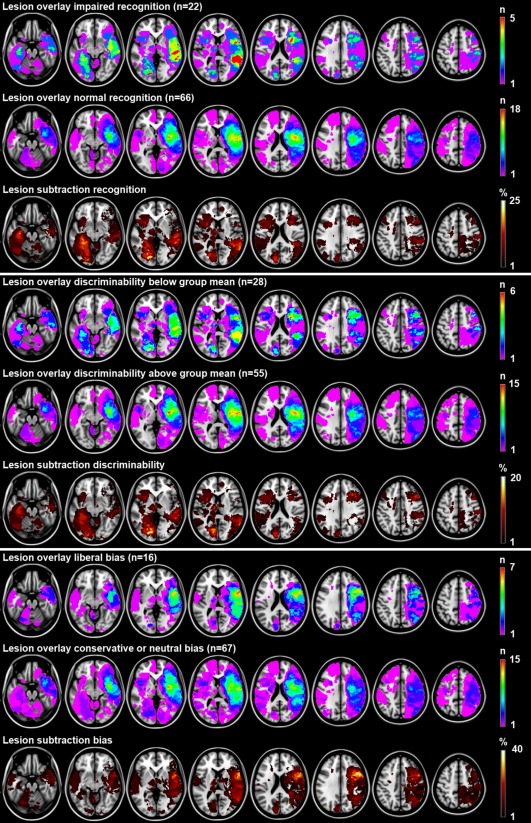Figure 3.

Lesion subtraction analyses. Lesion overlay and subtraction plots of dichotomized measures of recognition (impaired yes/no based on previously described norms), discriminability (impaired defined as performance below group mean because norms are not available), and response bias (liberal versus neutral or conservative). The overlay plots show the number of patients with a lesion for a given voxel separately for patients with impaired and normal performance. The lesion subtraction plots show which voxels are more frequently affected in patients with impaired performance compared to patients with normal performance. For example, the recognition overlay plots show that 4 out of 22 (18%) patients with impaired recognition have a lesion in the left hippocampus, whereas none of the 66 (0%) patients with normal recognition have a lesion in the left hippocampus. The lesion subtraction plot shows the resulting 18% difference in lesion prevalence. This finding suggests a crucial role of the left hippocampus in recognition. Because dichotomization of performance results in a decrease in statistical power and does not account for severity of the deficit, we chose to use the continuous outcome (analyzed with t‐test) in our main analyses. These qualitative lesion subtraction analyses (lesion subtraction does not provide measures of statistical significance) are presented here to assess the robustness of our results. The results are essentially the same: left medial temporal and temporo‐occipital structures were most consistently damaged in patients with impaired recognition and discriminability and spared in patients with normal recognition and discriminability (maximum difference in lesion density of 23% and 21%, respectively). The right inferior frontal gyrus was most consistently damaged in patients with liberal bias (maximum difference in lesion density of 36%). The right hemisphere is depicted on the right. [Color figure can be viewed in the online issue, which is available at http://wileyonlinelibrary.com.]
